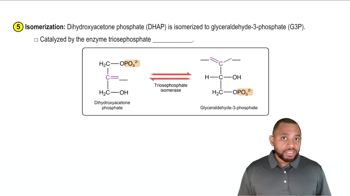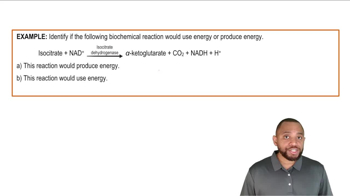Here are the essential concepts you must grasp in order to answer the question correctly.
Glycolysis
Glycolysis is a metabolic pathway that converts glucose into pyruvate, producing energy in the form of ATP and NADH. This process occurs in the cytoplasm of cells and consists of ten enzymatic reactions. It is the first step in cellular respiration and is anaerobic, meaning it does not require oxygen.
Recommended video:
Net ATP Yield
The net ATP yield from glycolysis refers to the total amount of ATP produced minus the ATP consumed during the process. For one molecule of glucose, glycolysis typically yields a net gain of 2 ATP molecules. This is crucial for understanding the energy balance in cellular metabolism.
Recommended video:
NADH Production
During glycolysis, two molecules of NADH are produced for each molecule of glucose. NADH serves as an electron carrier, playing a vital role in the electron transport chain, where it contributes to further ATP production. The generation of NADH is essential for cellular respiration and energy metabolism.
Recommended video:
Energy Production In Biochemical Pathways Example 1
 Verified step by step guidance
Verified step by step guidance


